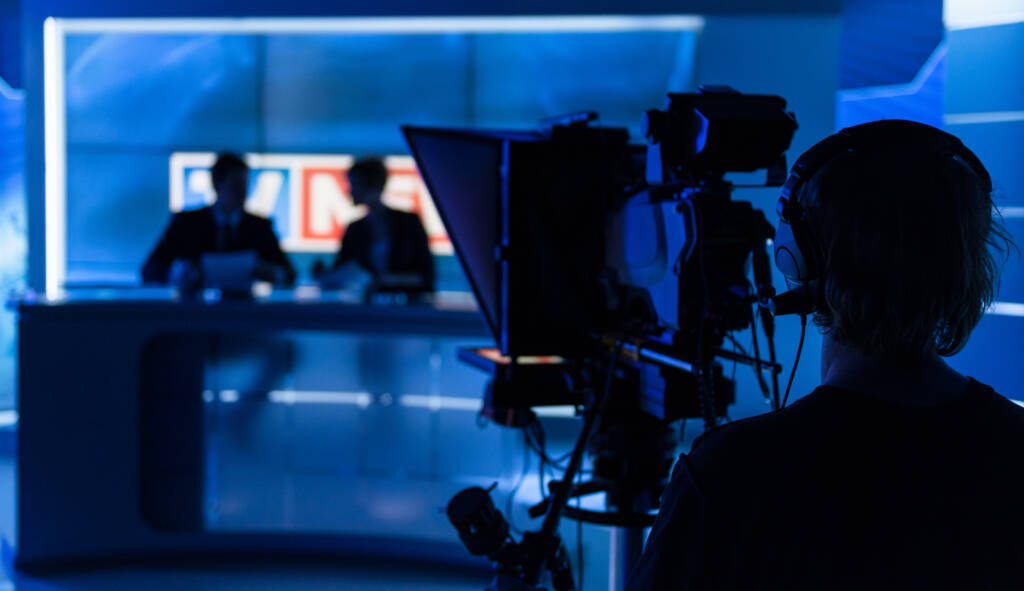Journalism 1b

Journalism 1b: Investigating the Truth
Explore how to turn your writing, photography, and collaborative skills into an exciting and rewarding career in journalism. Learn how to write a lead that grabs your readers, discover the roles of sources and how to interview them effectively, and explore the best options for researching your story in a digital world. You will also understand the role editors and producers play in the revision process, learn how to prepare your posts for publication, and how to follow the publication process – from the flow of a workday to the layout of a newspaper or a news broadcast.
During this course, you will learn career-related skills and earn a badge for this accomplishment. A badge is a digital certification of your career-related learning that you can share on social media or with higher education platforms, colleges, potential employers, peers, and colleagues. Select this link to learn more about badges.
Major Topics and Concepts
Unit 1: How to Write Stellar News Stories
Understand the different types of stories that make up journalistic writing.
Identify the elements of news stories and replicate them.
Structure a news story based on the journalistic outline.
Plan and write a news story that fits the criteria for one of the types discussed in the unit.
Unit 2: Researching Your Story Wisely and Well
Understand the role of research in journalism.
Identify the difference between fact checking and knowledge-based journalism.
Distinguish between a primary and secondary source and a credible and not credible source.
Create a strategy for finding the information you need.
Use key words and search engines/databases to find information.
Unit 3: Using Personal and Observational Sources
Identify the differences between observational and personal sources.
Understand how to find and cultivate good-quality sources.
Create effective interview questions and conduct interviews well.
Use source material to create compelling stories.
Unit 4: Preparing Posts for Publication
Understand the writing process and how it relates to journalism and writing under a deadline.
Work step by step through a piece of writing to revise for content and edit for clarity and concision.
Explore the role of an editor.
Learn the meaning of proofreader marks used for noting grammatical errors and style.
Identify and revise common grammatical and writing errors.
Use attribution successfully in writing and understand the purpose behind it.
Unit 5: Understanding the Publication Process
Understand the steps of creating the content of a newspaper or news broadcast.
Identify the parts of a news broadcast—including packages, teases, art, and segments—and learn how to create them.
Identify the four parts of a newspaper layout—headlines, text, art, and captions/cutlines—and tips to create them well.
Apply this knowledge to create your own miniature version of a news broadcast or newspaper.
Unit 6: The Changing Environment of Journalism
Discuss how technology is changing the scope of journalism.
Explore how consumer habits are changing journalism.
Understand the change in demographics of those consuming news stories.
Analyze the impact that technology, consumer habits, and demographics have on the future of journalism.
Unit 7: Data and Journalism
Explain what data journalism is and why it is important.
Discuss how a data journalist uses data to tell a story.
Understand the use of artificial intelligence (AI) in journalism.
Describe the ethical implications of AI in journalism.
Unit 8: Careers in Journalism
Identify the education and work experience needed to become a journalist.
Discuss how to create a writing portfolio.
Explore types of employers that hire journalists and the jobs they provide.
Discover opportunities in journalistic niches.
Competencies
Writing News Stories
Students will demonstrate an understanding of journalistic story writing by summarizing types of news stories, explaining the structure of a news story, and describing elements of a news story.
Research in Journalism
Students will demonstrate an understanding of research in journalism by explaining the role of research in journalism, describing types of sources, and summarizing research strategies for credible sources.
Scene Sources in Journalism
Students will demonstrate an understanding of scene sources in journalism by differentiating observational and personal sources in journalism, summarizing journalistic rules for reporting on the scene, and describing steps in the interview process.
Writing for Publication
Students will demonstrate an understanding of writing for publication by explaining the writing process, comparing revision and editing, and describing the use of attribution.
The Publication Process
Students will demonstrate an understanding of the publication process by explaining steps in the publication process, describing components of a news broadcast, and describing components of a newspaper layout.
The Journalism Model
Students will demonstrate an understanding of the new journalism model by describing technology in journalism, explaining consumer habits in the new journalism model, and summarizing the future of the journalism model.
Data in Journalism
Students will demonstrate an understanding of data in journalism by summarizing the importance of data in journalism, explaining a data journalist’s use of data in storytelling, and describing the use of artificial intelligence in journalism.
Careers in Journalism
Students will demonstrate an understanding of careers in journalism by explaining education or experience requirements for journalism careers, summarizing the skills required for a journalism career, and describing career options in journalism.
